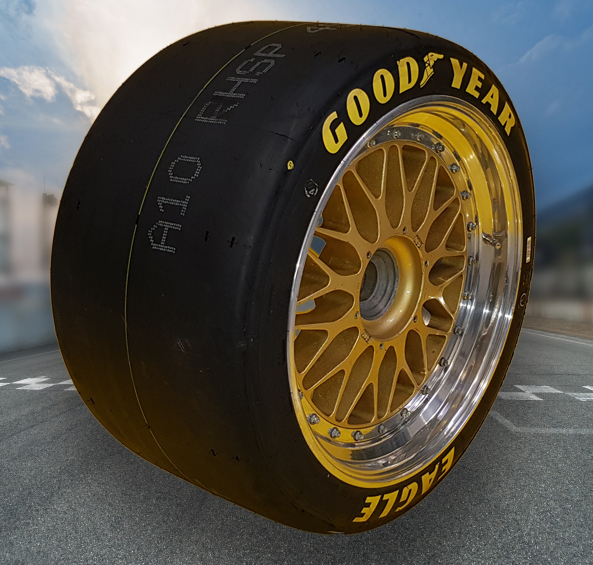Which Tyres Degrade More Quickly, Front or Rear?
In a perfect automotive world, all four Churchill Tyres Middlesbrough would always wear equally, and you wouldn't ever need to attend the tyre shop with your hat in hand, your eyes shielded, and shyly admitting that your tyres are wearing unevenly in front of the tyre techs (oh yeah, it can be that dramatic)...
But truly, you're not alone if you've ever noticed uneven tyre wear. It happens frequently that the front and rear tyres to have uneven wear.
Is there anything you can do to prevent this dreadful uneven tyre wear scenario? And what are the causes of rapid front and rear tyre wear? Here is the skinny.
General Tyre Wear
Let's make sure you're on the right track to learning how to minimize overall tyre wear before we go into the reasons why the front and rear tyres wear differently.
Premature tyre wear is typically caused by user error, a lack of tyre awareness, or problems with the vehicle's alignment or suspension system. These problems can affect the front, rear, left, right, or spare tyre (think about it...).
Tyres are unlike other car parts in that they work properly without user intervention or monitoring. For proper wear, they also rely on the mechanical soundness of ancillary component systems. Premature tyre wear is likely if the front, back, or any particular tyre is not taken care of as needed to maximise tread life.
High Rear Tyre Wear Factors
- Sports vehicles and high-powered, high-performance coupes and sedans frequently experience, and even anticipate, high wear on the rear tyres.
- The rear tyres must transmit all of the drivetrain's forces to the pavement because only the rear wheels receive them. Of course, greater power will make the issue worse in terms of wear, especially if the rear tyres are frequently used to channel that power (cough...).
- Performance cars tend to lean more towards an oversteer balance than a conventional car, which puts additional strain on the back tyres. Because of this, the rear axle is more frequently "in play" during turns and manoeuvres, which again places an excessive amount of traction management responsibility on those rear tyres.
- An extreme example of rear-wheel drive, high-powered oversteer handling balance.
- Regular, even, rapid tyre rotation techniques between the front and rear axles will help to smooth out your tyre wear condition if you drive a rear-wheel drive performance car with square tyres.
- If your tyres get staggered, then maintaining correct pressure, alignment, and controlling that right foot will result in minimizing rear tyre wear. If none of these situations apply to you but you're still wearing your back tyres out quickly, the problem may be with your suspension, alignment, or inflation.
Front Tyre Wear Factors
- The front tyres of a front-wheel drive vehicle (passenger cars, minivans, etc.) will wear out a little faster than the rear tyres under typical driving conditions.
- In a front-wheel drive setup, the front tyres are necessary to control all powertrain forces, much like a rear-wheel drive performance vehicle, though not to the same level. The fact that the front tyres bear the majority of the steering and braking forces causes front tyre degradation to proceed more quickly.
- The answer to even tyre wear in a front-wheel drive car is tyre rotation. The square tyre configuration seen on the majority of front-wheel drive passenger cars enables front-to-rear tyre rotations.
- In a front-wheel drive vehicle, if tyre rotations are taking place and your front (or rear) tyres are showing visibly disproportionate wear, especially uneven wear across the front tyres, then inflation, alignment, and/or suspension problems are the likely culprits.
Examples:
- Underinflated tyres will have significant wear on their edges.
- Overinflated tyres will have significant tread wear in the middle.
- High wear on the inside or outer tread blocks of the tyres will be the result of toe and camber wear.
- Cupping wear is an indication of worn-out or damaged suspension parts.
First, rule out poor inflation as the cause if you are experiencing high, uneven front or rear tyre wear. For advice, look into understanding your tyre pressure.
The most likely causes are alignment and/or suspension problems if tyre pressures are within specifications. For expert analysis and solutions, go to a tyre shop.
Managing Uneven Tyre Wear
Here are some things to consider if you've seen this post too late and are currently trying to decide how to handle your uneven front or rear tyre wear:
All four tyres should get replaced if wear is uneven thus far along. Even if just the front or rear tyres are past their prime, the other two tyres may be so worn that replacement is always advised. A traction and handling imbalance with the older set of tyres could result from fitting two new, full tread depth tyres.
We understand that not extending a tyre's life to its full potential is regrettable and seems like a waste of money wasted. Yet, in many situations with uneven wear, changing all four tyres is a much better option in the short- and long-term. We advise you to follow the tyre technician's recommendations.
The brand, model, and specifications of all four Tyres Middlesbrough should match. If the two tyres with remaining life are going to stay on the car, then you need two new tyres of the same brand and type to match up. It is strongly advised against using different tyre brands or types on the front and back axles. The drivetrain may get harmed as a result of this approach, among other drivability issues.




Comments
Post a Comment